Beyond simple over-the-air updates, you can also install an IPSW file on your iPhone to manually control the iOS firmware updating or downgrading. You can install an IPSW file for troubleshooting your iOS device, switch to a previous iOS version, or install a beta. This article explains what an IPSW file is and tells how to install an IPSW file on an iPhone with or without iTunes.
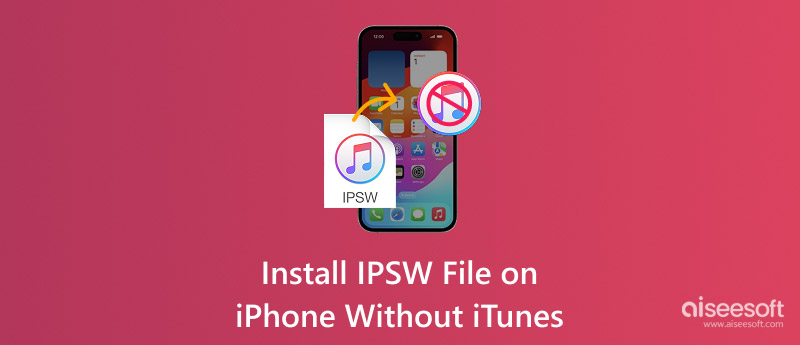
An IPSW (short for iPhone Software) file is the raw firmware package for your iPhone. It contains everything needed to install or restore iOS on your device. An IPSW file often contains the core operating system, device drivers, baseband firmware, bootloaders and low-level system components, and essential default apps. Moreover, it has security certificates and signatures from Apple. An IPSW file can be installed on an iPhone to perform a clean restore, factory reset the device, or troubleshoot issues.
Each IPSW file is built for a particular iPhone model. It is also used for an exact version of iOS. All IPSW files are signed by Apple cryptographically. When you want to install an IPSW file, your device and iTunes/Finder will verify the signature before installation. This is primarily for security.
Before installing an IPSW on your iPhone, you should back up all the important data using iCloud, iTunes, or Finder. As mentioned above, an IPSW file corresponds to a specific iOS version and iPhone model. Check the IPSW file you downloaded and make sure it matches. Installing the wrong IPSW file may brick your device and make it unusable. Connect the iPhone to your computer via a high-quality USB cable and follow the steps below to install the desired iOS firmware.
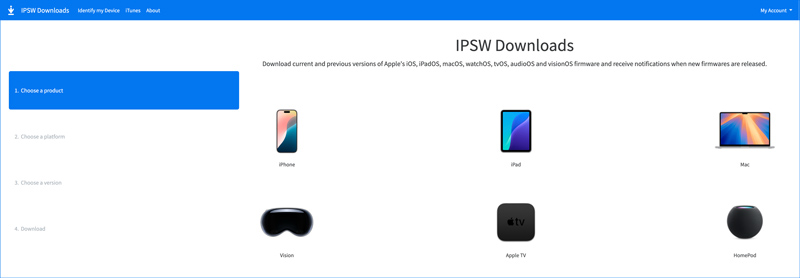
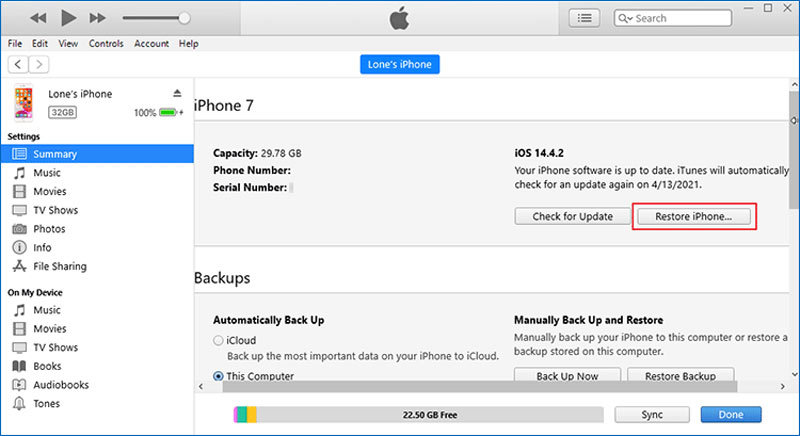
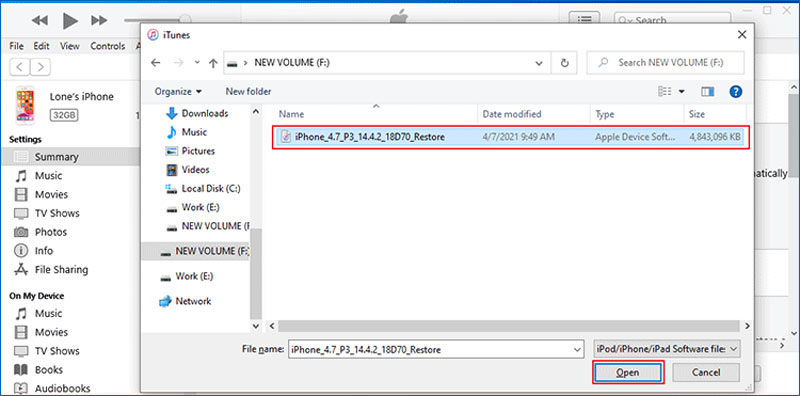
If you prefer to install an IPSW file on your iPhone without iTunes and Finder, you can rely on several reputable third-party tools. They can install IPSW files and update iOS without a complete erase. Popular options include iMazing, 3uTools, and iTunes Alternative Libraries. For instance, you can use iMazing to reinstall iOS on an iPhone while maintaining its data. The software has an individual Reinstall iOS screen for you to do that.
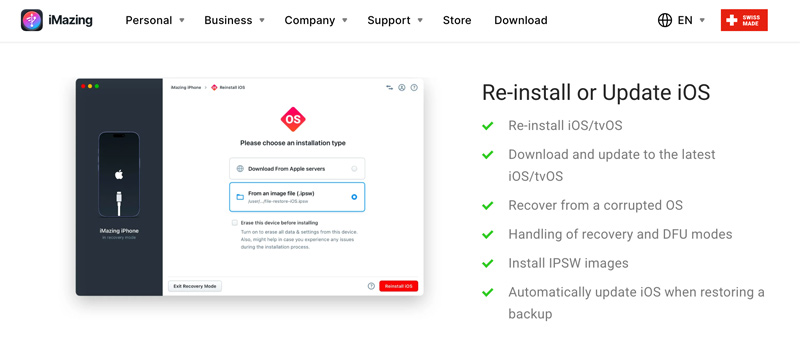
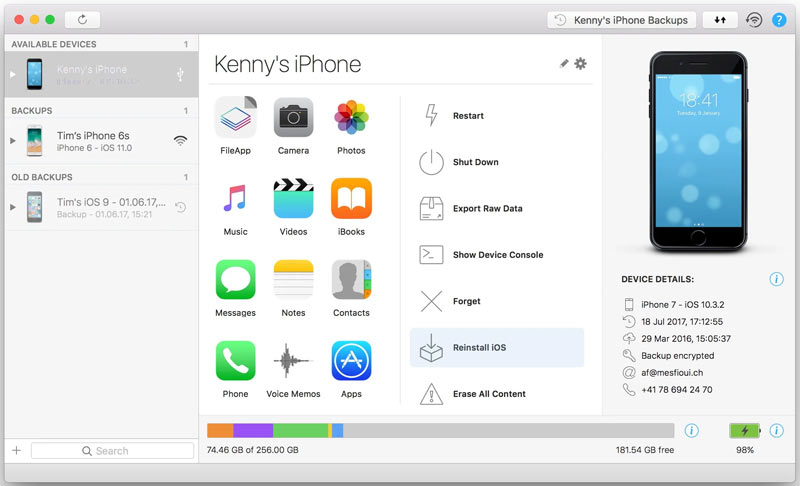
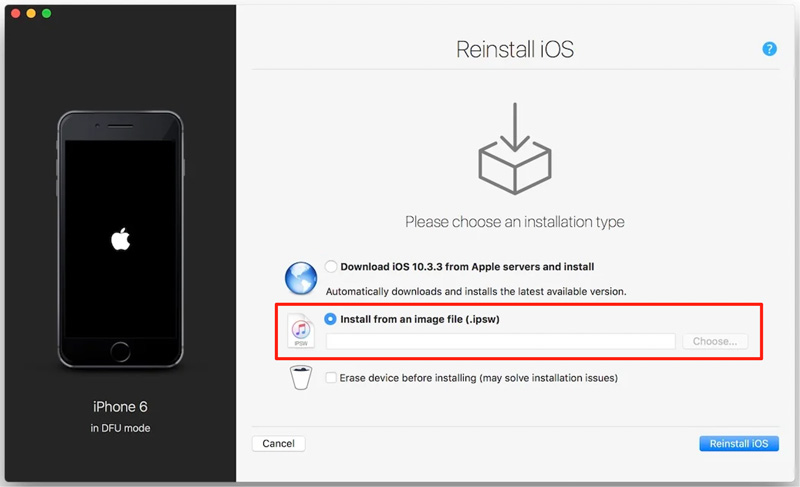
You may encounter various issues while updating or downgrading iOS, including Error 3194, 4013, 4014, 9, 6, 1611, 14, and 9006. Perform a force restart and check if your iPhone returns to normal. You can use the reliable iOS System Recovery to resolve these errors safely. During the fixing, you can select a desired version to update your iPhone.
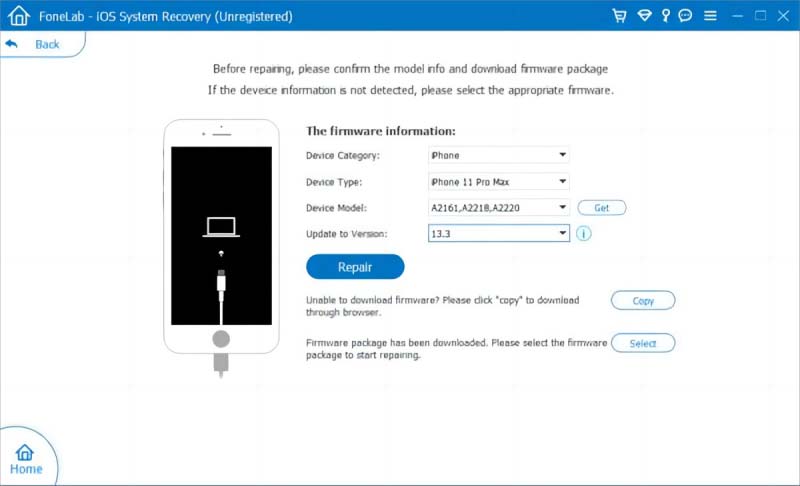
Should I install a beta iOS on my iPhone?
You should decide whether to install a beta iOS version, depending on your specific needs. The beta iOS comes with various bugs and may lead to instability. Some apps may crash unexpectedly. Moreover, some features like Wi-Fi, cellular data, Bluetooth, or AirDrop might break. Beta software can also corrupt data or cause app data loss. So, before you update iOS to a beta version, you should create a backup. Generally, it is not suggested to do that on a primary device. On the contrary, if you need to test apps on upcoming iOS versions, want to use advanced features in the new iOS, or you prefer to install the beta software on a secondary device, you can install the beta version.
Can I restore an iPhone without iTunes or Finder?
Yes, you can restore your iPhone without iTunes or Finder. Apple designs built-in options for you to restore directly on the iOS device over Wi-Fi. Go to General in the Settings app, tap the Transfer or Reset iPhone option, and then choose Erase All Content and Settings. Enter your passcode to confirm the action. After restarting, follow the setup prompts to restore it from a suitable iCloud backup. Besides, you can put your iPhone into Recovery Mode and then use the Restore function to install the latest iOS version. You can set up the iPhone as new or restore from an iCloud backup, depending on your needs.
How do you revert iOS from a beta version to the official one?
Before you revert the iOS device from a beta version to the official public release, ensure you have a recent backup. Connect to a computer with the latest iTunes or Finder installed. Force restart your device and put it into Recovery Mode. Once iTunes/Finder detects that your phone is in the mode, it will prompt you with a Restore option. Click Restore to download the latest official iOS to the device. This operation will erase all the existing files and settings.
Conclusion
You can learn to install an IPSW file on an iPhone with or without iTunes from this post. Installing an IPSW file allows you to have direct control over the iOS version on your iPhone. You can install iOS firmware for troubleshooting, beta testing, or downgrading. Whatever the reason, ensure you download the correct IPSW file from a reliable source, and then follow the guide carefully to install it on your device. Before installing an IPSW file, ensure you have a recent backup that contains all your valuable data.

Fix your iOS system to normal in various issues like being stuck in DFU mode, recovery mode, headphone mode, Apple logo, etc. to normal without any data loss.
100% Secure. No Ads.
100% Secure. No Ads.